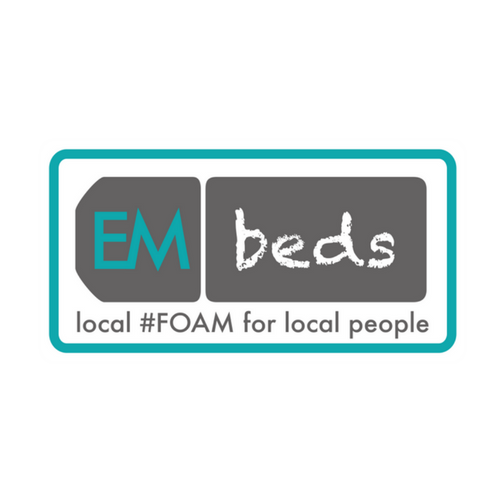Before you start
- Whats the cause? – treating the precipitant often sorts the AF (adding B-Blockers to Sepsis can make things worse)
- Stable or Unstable? – Electricity vs. Drugs
- CHADS-VASC vs. ORBIT– Anticoagulation (previously HAS-BLED)
- Rhythm vs. Rate control??
- NEW Symptomatic Arrhythmia Clinic [6-8weeks] – referral form attached tho the PDF
Causes
It’s essential any Modifiable causes are treated, these include:
-
- Haemodynamic stress: Valvular disease/Hypertension/LVD/Thrombus
- Atrial ischemia: Ischaemic Heart Disease
- Inflammation: Sepsis/Myocarditis/pericarditis
- Noncardiovascular respiratory causes: PE/Pneumonia/Lung Cancer
- Alcohol and drug use: Alcohol/Cocaine/Amphetamine
- Endocrine disorders: Hyperthyroid/Diabetes/Phaeochromacytoma/Electrolyte prob.
- Neurologic disorders: Subarachnoid Haemorrhage/Stroke
- Genetic factors
- Advancing age
1.0 Haemodynamically UNSTABLE patients
-
- Shock sBP <90mmHg – poor perfusion
- Reduced level of consciousness – poor brain perfusion
- Cardiac Ischaemia – poor heart perfusion
- Pulmonary Oedema – poor lung perfusion
Emergency DC Cardioversion (DCC) is the mainstay of treatment. Obviously DCC is uncomfortable experience and sedation is preferable, however, if unstable sedation may not be an option.
1.1 DC Cadiaversion (SYNCRONISED)

-
- Consent (best interest if needed)
- Sedation if possible (may require anaesthetic assistance)
- DC Cardiaversion
- Syncronise (white dots appear over QRS on monitor)
- Energy
- 1st shock 70J
- 2nd shock 120J
- 3rd shock 200J
- Charge & Shock (oxygen away, everyone clear!)
- Reassess – repeat for further shocks if required
2.0 ABC of AF
European Society of Cardiologyhas introduced the concept of the ABC of AF
-
- Anticoagulation – AF increases stroke risk 5-fold
- Better Symptom Control – Rate/Rhyme control (Haemodynamic instability = DCC)
- Cardiovascular risk factors – Identification and treatment
2.1 Anticoagulation
AF increases the chance of Stroke by 5x (and those recently diagnosed are least likely be on any form of protection)
- ESC/NICE recommends using the CHADS-VASc to assess stroke risk and ORBIT to assess bleeding risk
- There are currently significant delays getting to “New AF” clinic as well as to GP’s, making assessment of Stroke risk in ED more important than ever

CHADS-VASc outcome recommendations
-
- Males (0), Female (1) – No anticoagulation recommended
- Males (1) – Consider anticoagulation (DOAC) in light of bleed risk
- ALL (≥2) – Anticoagulation recommended (DOAC)- Trust DOAC guide, NICE/CKS
- Use Apixaban where first line, significantly cheaper. If using alternative please document reasons.
ORBIT outcome recommendations
-
- Modifiable risks – Address ALL modifiable risk factors
- Most will benefit from anticoagulation – but discuss personalised risk with patients
Contraindications to Anticoagulation inc:
-
- Active serious bleeding (where the source should be identified and treated)
- Associated comorbidities (e.g. severe thrombocytopenia <50 platelets/lL, severe anaemia under investigation, etc.)
- Recent high-risk bleeding event such as intracranial haemorrhage (ICH).
2.2 Better Symptom Control
-
- Haemodynamically STABLE patients: the 2020 ESC don’t recommend Rate vs Rhythm control as better as the initial treatment.EAST studyshowed early rhythm control improved outcomes, but early was defined as within 36 days of diagnosis.
- Haemodynamically UNSTABLE patients: will require EMERGENCY DC Cardioversion.
Rates control:
-
- First line:
- β-Blocker
- Non-dihydropyridine calcium channel blockers (Diltiazem/Verapamil) – esp. in Severe COPD/Asthma
- Second Line:Consider adding in
- Digoxin – however, digoxin alone is not effective in patients with increased sympathetic drive. Observational studies have associated digoxin use with excess mortality in AF patients)
- Amiodarone can be useful as a last resort when heart rate cannot be controlled with combination therapy in patients who do not qualify for non-pharmacological rate control
- First line:
Rhythm Control:
- Is the patient suitable?
- Time from onset
- <12hr (clear onset) – No restriction
- 12-48hr (clear onset) – Only CHADS-VASc Male(≤1), Female(≤2)
- >48hr – ≥3 weeks of anticoagulation
- Factors favouring Rhythm control
- Younger age
- 1st episode of AF
- No or few comorbidities/Heart failure
- Rate control difficult to achieve
- AF precipitated by a temporary event
- Patient choice
- Time from onset
- How?
- Sedation & DC Cardioversion: is quicker and more reliable than drugs, (see DC Cardioversion 1.1)
- Few pharmacological options:
- Flecanide (Pill in the pocket) – Risk of arrhythmias, contraindicated in Atrial Flutter and Structural Heart Disease
- Amiodarone only in Severe/Moderate CCF
2.3 Cardiovascular risk factors
-
- Life Style
- Obesity: Risk of AF, Recurrence of AF and Stoke all increase with BMI
- Alcohol: Alcohol excess both increases the risk of AF and of Bleeding, so patient should support to reduce aldol intake is recommended
- Caffeine: It is unlikely caffeine consumption causes AF. Habitual caffeine use may reduce the risk of developing AF. But increases the symptoms
- Exercise: Moderate cardiavasclar exercise is protective, however higher rates of AF are seen in elite athletes and vigorous physical activity
- Specific conditions- patient should follow up with GP/Clinic (treatment may start in ED)
- Hypertension
- Heart Failure
- Coronary artery disease
- Diabetes Mellitus
- Sleep Apnoea
- Life Style
3.0 Discharge? – If all of following
-
- No compromise
- HR<110 for 2hr
- No precipitants requiring admission
AF/SVT Clinic
- This clinic is only for:
- Symptomatic patients with new onset AF /SVT (where the presenting symptoms are definitely due to AF /SVT)
- And patients have fast ventricular rates.
- ECG shows AF/SVT
- Refer to AF Clinic if new & symptomatic :AF/SVT clinic Referral form
4.0 Specific situations
ESC 2020 Guidance – the full guidance has more detail about specific patient groups, including pregnancy, elite athletes cognitive impairment etc. (page 67 onward)


